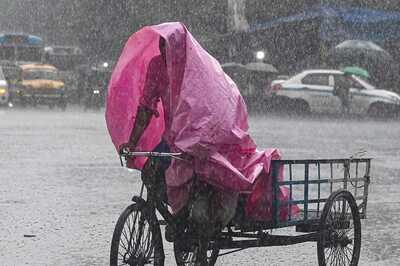
views
Kolkata: In a big leap for clean energy generation, a professor at the Indian Institute of Technology (IIT), Kharagpur, has invented a unique, cost-effective device that generates electricity with a pinch of salt and a piece of clothing, a move that can potentially light up remote corners of India which have no access to conventional energy sources.
The method, that aims to fulfill power requirements through nanoscale energy harvesting, is cheaper than solar panels and sources energy through drying clothes in open spaces. “Drying of clothes is a part and parcel of our lives, but who would’ve thought that it can now be used to meet power requirements through nanoscale harvesting,” says Dr Suman Chakraborty, Department of Mechanical Engineering, IIT Kharagpur.
This, coupled with the fact that salt is an indispensable part of every household, makes the project extremely unique, handy and viable. The process hinges on the cellulose-based textile found in our clothes that have a network of nano-channels. “The ions in saline water can move through this interlace fibrous nanoscale network by capillary action, inducing an electric potential in the process,” the professor explains.
In a pilot test, about 50 clothing items were put up for drying across a surface area of 3,000 square meter in a remote village. These clothes were connected to a commercial super-capacitor that discharged about 10 volts of energy in 24 hours. This stored energy is enough to glow a white LED for more than one hour.
Speaking about the impact of such an idea, especially in rural spaces, Dr Chakraborty says, “A bowl of water with a little bit of salt and a piece of cloth can generate a few milliwatts. You can imagine how effective it will be on a large scale. It’s enough to light up a small hut.”
“Another novelty of this device is the use of intrinsic surface energy of the fabric for driving the current. In contrast, other artificially engineered power generation devices need external pumping resources. This eventually culminates into a utilitarian paradigm of low-cost power harvesting in extreme rural settings,” Chakraborty adds.
The institute is now planning to present the proposed project to the West Bengal government as an alternative for addressing the power requirements of the underprivileged community. “It was once beyond our imagination that a wet cloth being dried in a natural atmosphere could be made capable of generating clean energy. This invention will bring momentous change in rural India. It is a Diwali gift from us to the people,” Chakraborty says.




















Comments
0 comment